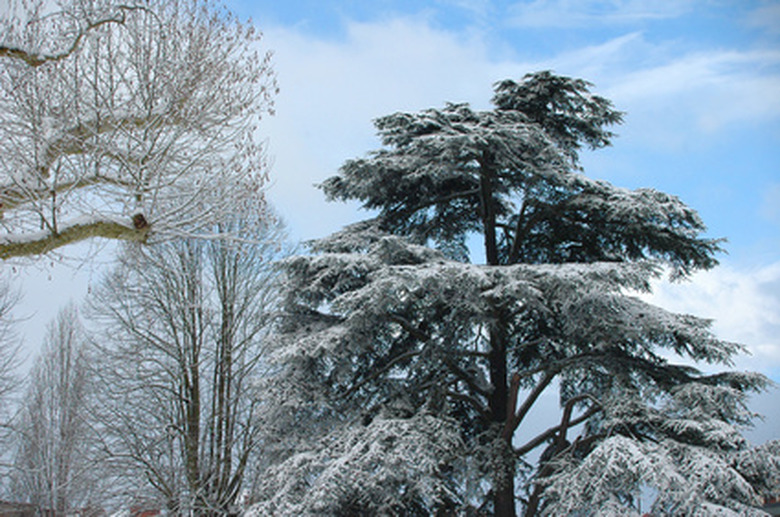Evergreens For Georgia
Most of Georgia lies in two USDA hardiness zones–seven and eight–with just a small section in the north central part of the state that is in zone six. These zones give gardeners a wide variety of evergreens to choose from. Large evergreen trees that grow further north live in the north and central parts of the state, evergreens with traditional leaves that are hardy in Florida are found in the central and south parts of Georgia and very adaptable varieties are hardy in all of the state.
White Fir
White fir (Abies concolor) is also known as Colorado fir and is a member of the pine family. White fir grows as tall as 40 to 100 feet, producing flat needles that grow up to 2 inches long, blue-green on the top and whitish on the bottom. The cones grow upright and do not fall off the tree like they do in other species. The purple-green, 5-inch-long cones stay on the tree and disintegrate after the seeds have been released. Plant white fir in full sun and in a moist soil with a northern exposure. The tree is hardy in USDA zones six and seven in Georgia.
- Most of Georgia lies in two USDA hardiness zones–seven and eight–with just a small section in the north central part of the state that is in zone six.
- The cones grow upright and do not fall off the tree like they do in other species.
Japanese Plum Yew
Japanese plum yew (Cephalotaxus harringtonia) is also known as Harrington plum yew, cow-tail pine and plum yew and is a member of the plum yew family. The plant can be grown as a shrub or small tree and is capable of growing as tall as 30 feet and as wide as 20 feet. The shrub will be either male or female and in order to produce seeds, you must have a ratio of one male to five female plants. The plant produces flat, sickle-shaped, needle-like leaves and the female plants produce 1-inch-long, edible, green seeds that resemble a plum. Plant Japanese plum yew in full sun in North Georgia, in partial shade in the south and a sandy, moist, well-drained soil. The tree is hardy in all of Georgia.
Loropetalum
Loropetalum (Loropetalum chinense) is a member of the witch hazel family. The plant is a shrub that features a loose structure with horizontally arranged branches that grow as tall 12 feet with a width of from 6 to 8 feet. The shrubs produce oval leaves that grow from 1 to 2 inches long and 1 inch wide. The varieties that produce white or yellow flowers have light-green or yellow-green leaves and those that produce red flowers have darker green leaves. Both bloom in late winter and continue though spring and summer. Plant loropetalum in partial shade and in a moist, well drained soil. The plant is hardy in zones six and seven in Georgia.
- Japanese plum yew (Cephalotaxus harringtonia) is also known as Harrington plum yew, cow-tail pine and plum yew and is a member of the plum yew family.
- The plant can be grown as a shrub or small tree and is capable of growing as tall as 30 feet and as wide as 20 feet.
